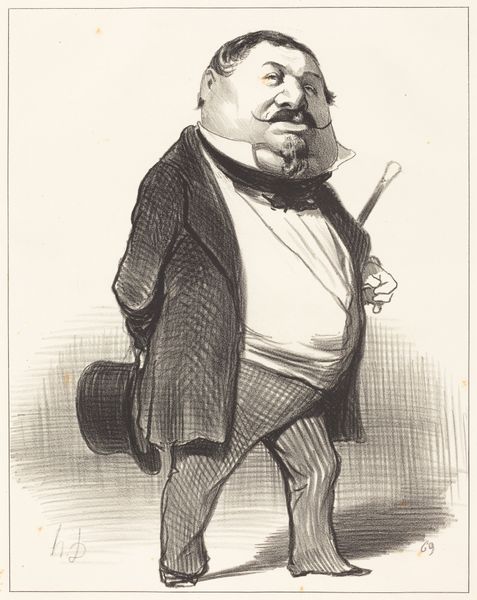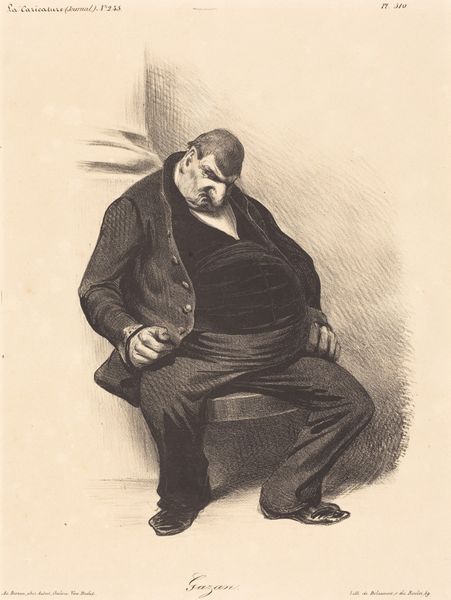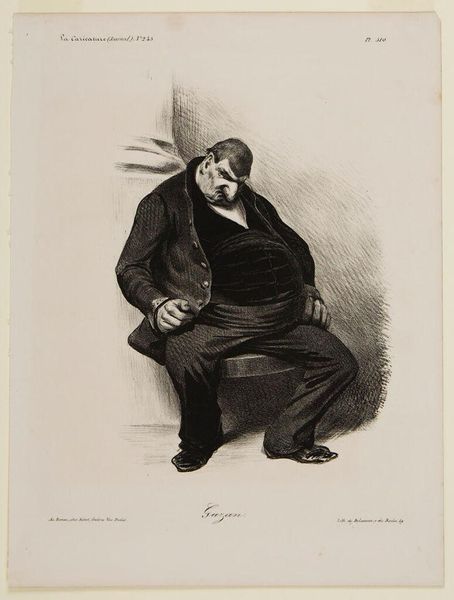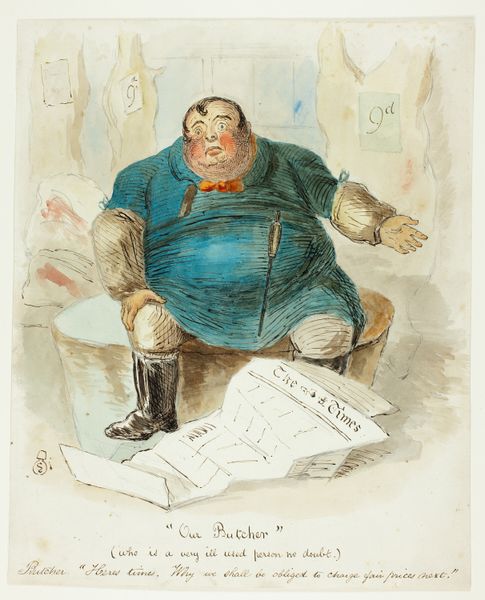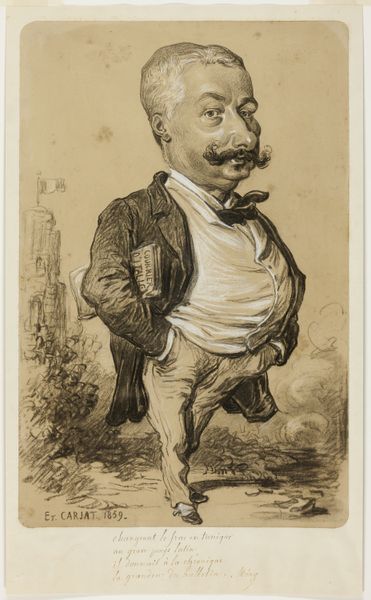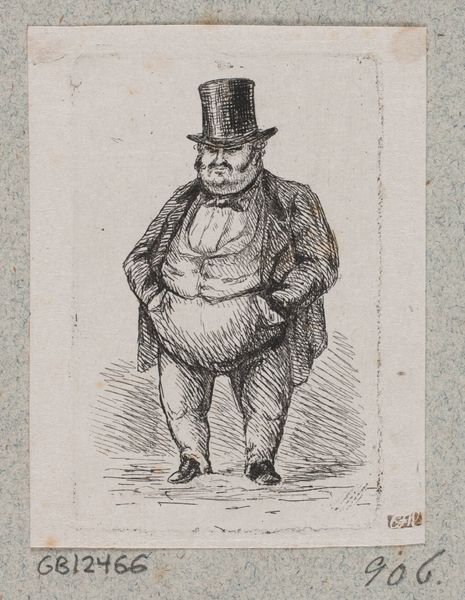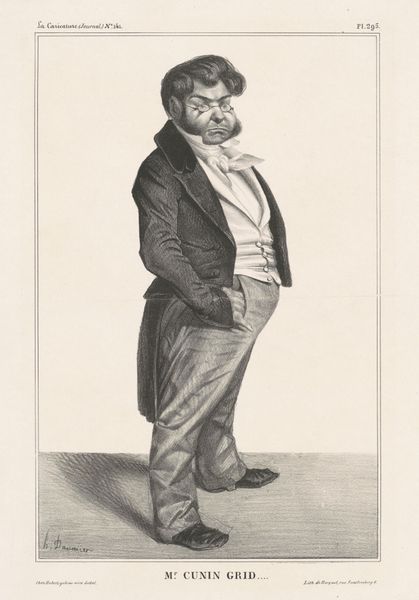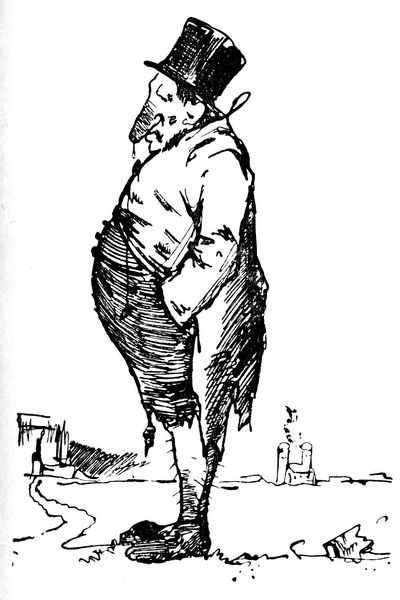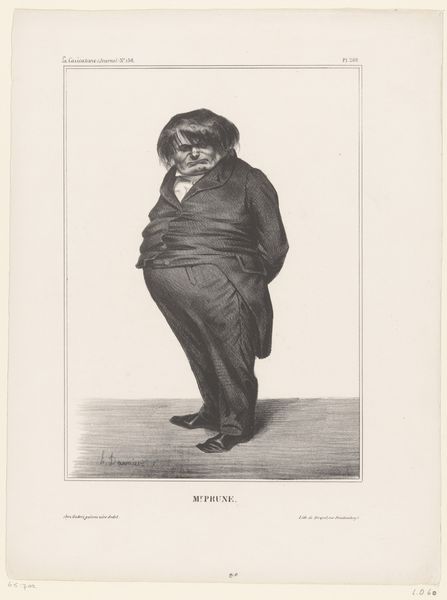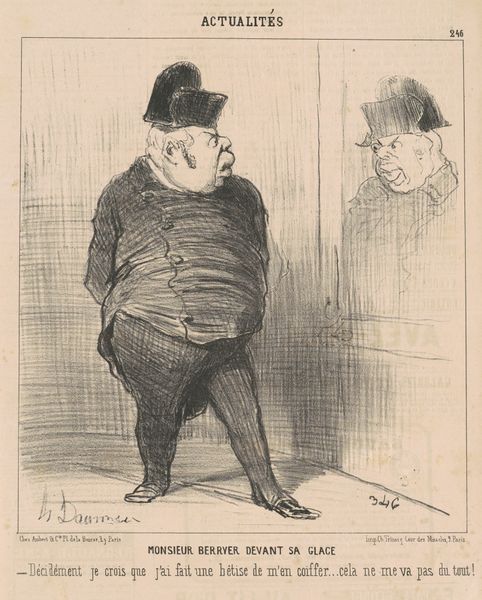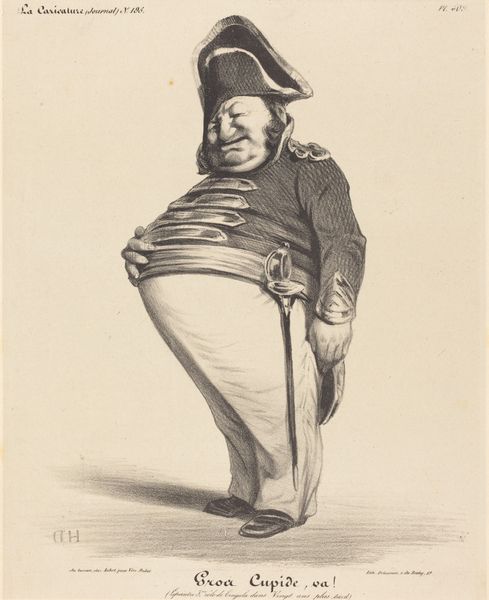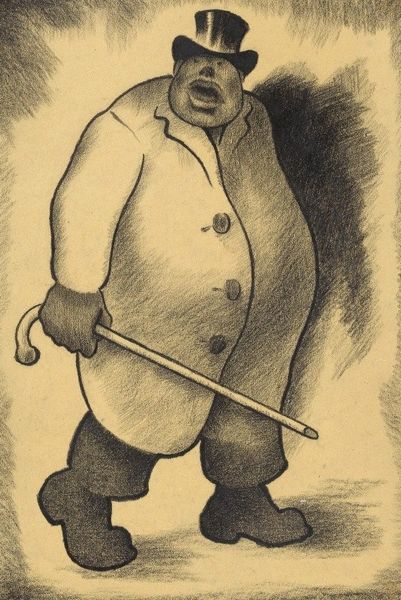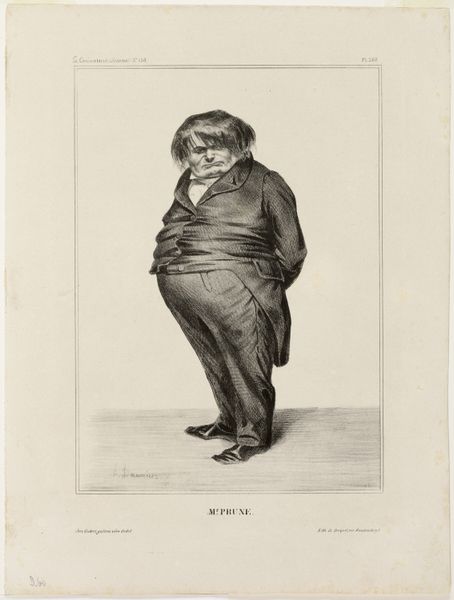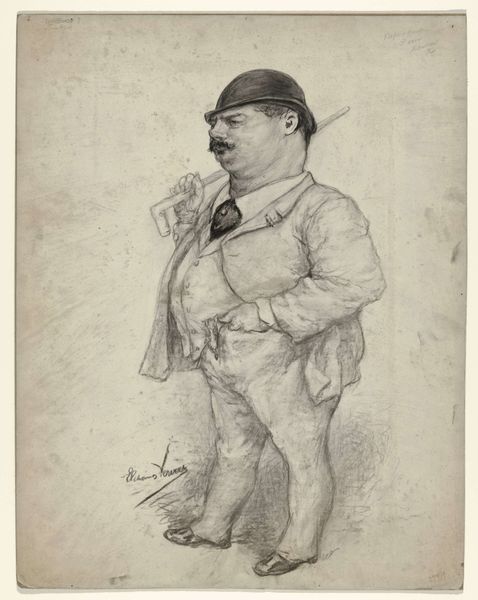
drawing, lithograph, print, pencil
#
portrait
#
drawing
#
lithograph
# print
#
caricature
#
caricature
#
figuration
#
pencil drawing
#
romanticism
#
pencil
#
portrait drawing
#
genre-painting
Copyright: National Gallery of Art: CC0 1.0
Curator: Honoré Daumier's lithograph, "Antony Thouret," created in 1849, presents a fascinating caricature. What strikes you first about it? Editor: The sheer physicality of the subject is overwhelming. The lithographic technique allows for such depth of shading; it almost feels sculptural, like carved stone rather than ink on paper. The weight and density are almost palpable. Curator: Absolutely, and that exaggeration speaks volumes. Thouret was a prominent actor, and Daumier frequently used caricature to critique the bourgeoisie. What do you read in the deliberate distortion? Editor: Well, consider the materiality of the stage itself, and the constructed nature of performance. Daumier's rendering highlights not just Thouret's physical presence, but also how that presence is presented and consumed by the public. He uses the graphic weight of the medium to make us think about consumption in every sense. Curator: It is impossible to ignore the social commentary embedded in this exaggeration. Daumier uses caricature as a potent tool, suggesting a critique of power, perhaps even the self-importance inherent in celebrity culture. This portrait becomes an indictment of the social elite through the lens of theatrical performance. Editor: Yes, and lithography itself as a means of reproduction played a role in democratizing images, distributing critiques to a wider audience. Its impact as a consumer product commenting on other forms of consumption should be emphasized. Curator: Indeed, Daumier’s clever exploitation of lithography serves not just aesthetic purposes but underscores the very socio-political fabric of his time, challenging perceptions of status and representation. Editor: Seeing it this way brings an exciting, crucial aspect: the art not only captures but actively comments on its cultural and economic environment through its form and distribution. Curator: Exploring the intersection of artistry, societal critique, and performative identity in "Antony Thouret" provides fertile ground for discussions on art's role in cultural discourse. Editor: Precisely. And in understanding the techniques that bring images and commentaries like this to life we gain the ability to see the making of a critical idea as a work itself.
Comments
No comments
Be the first to comment and join the conversation on the ultimate creative platform.
